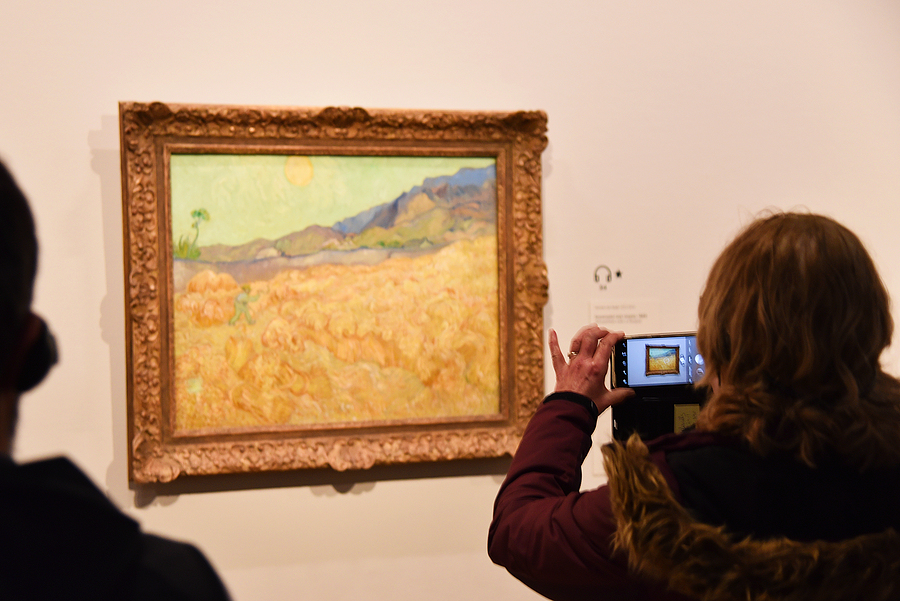Impressionism is one of the best-known styles of art in the world. Works by some of its most famous pioneers sell for millions of dollars at auction, such as Cezanne’s La Montagne Sainte-Victoire, which fetched $137.7m at Christie’s, New York, in 2022. In 2024, Impressionism reaches a milestone 150 year anniversary.
The Art Newspaper reports that the term ‘impressionist’ was first used in a derogatory manner by an unimpressed critic of Claude Monet’s 1872 work Impression, Soleil Levant. The painting was first exhibited in 1874 alongside work by Pissarro, Renoir, and Degas. The artists were undeterred by the criticism, and later adopted the term with pride.
To celebrate this anniversary, various art shows will be held around the world, including a major retrospective at the Musée d’Orsay in Paris, titled Paris 1874: Inventing Impressionism. The show will show over 130 works, many of which were first exhibited in Paris 150 years ago.
The exhibition will run in Paris between 26 March and 14 July, before transferring across the Atlantic to the National Gallery of Art in Washington, where it will run from 8 September to 19 January 2025.
There will be further shows celebrating Impressionism during 2024, including Monet and London at the Courtauld Gallery in London, The Impressionist Revolution from Monet to Matisse at the Dallas Museum of Art, and Frontiers of Impressionism: Paintings from the Worcester Art Museum at the Tokyo Metropolitan Art Museum.
The Impressionist movement first began to develop in France during the 1860s, although some critics argue that it first originated with the British painter John Constable much earlier, during the 1810s. Constable was determined to paint nature in a more realistic way, based on what he saw rather than the romanticised interpretations that were currently fashionable.
Impressionist painters worked outdoors rather than in a studio, usually painting landscapes or scenes from everyday life. The style of the French Impressionists evolved from the realistic style of Constable to a looser style, characterised by rapid and visible brushwork as the artists sought to capture the transient effects of light and colour.
The key artists of the Impressionist movement were Claude Monet, Auguste Renoir, Edgar Degas, Camille Pissaro, Berthe Morisot, and Paul Cezanne. Today, this style of painting is still hugely popular and the work of these artists is highly valued and sought after. However, it was strikingly revolutionary in terms of its style and subject matter 150 years ago.
For example, Renoir and Degas would portray ordinary people going about their everyday lives, which seems unremarkable now but at the time these were not considered to be fit subjects for serious art.
Paintings were very much the preserve of the wealthy upper classes and the aristocracy, and celebrated classical historic or religious figures or scenes; or the luminaries of the day in idealised settings and highly curated poses.
The Impressionist painters broke with this tradition by depicting the middle and working classes in natural uncontrived situations, such as walking in parks or on the beach, or visiting shops and cafes. This approach was at first greeted with hostility from the public and critics, but by the 1880s, Impressionist works increasingly drew public support and acclaim.
Many of the works of Claude Monet prioritise the fleeting effects of light and colour in nature rather than the actual subject matter itself. Indeed, many of his paintings have almost non-subjects, such as rows of poplar trees or haystacks.
The focus instead was on the use of intense colours and rapid brushworks to capture the eye’s interpretation of the scene, rather than the precise details. This is thought to be more true of what we actually experience when we view a scene; a quick impression of light and colour rather than a detailed focus.
Impressionist artists were also influenced by new scientific theories about complementary colours. The colour wheel was evolved, which depicted complementary colours opposite each other on a visible spectrum. This allowed artists to experiment with colours that produced a particularly vibrant contrast, such as orange and blue and red and green.
Ready-mixed paint became available in tubes for the first time, further helping artists to produce rapid and spontaneous work that captured the light, colours and emotional quality of the scene directly in front of them.
If you have a favourite Impressionist print to display, please drop into our framing shop in east London.
